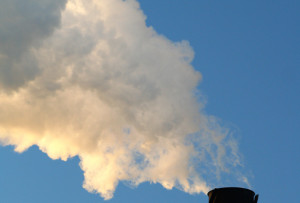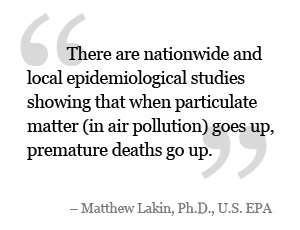Why Your Neighbor’s Wood Smoke is Killing You
 In many locations, wood burning is the largest contributor to wintertime particulate pollution (PM2.5). An important new study from scientists at the Harvard School of Public Health demonstrates just how harmful this pollution is to human health.
In many locations, wood burning is the largest contributor to wintertime particulate pollution (PM2.5). An important new study from scientists at the Harvard School of Public Health demonstrates just how harmful this pollution is to human health.
What they found is alarming. In the study’s sample of 2.4 million people, there were higher death rates in zip codes with higher particulate pollution levels than in those with lower levels. Even small increases in PM2.5 led to higher death rates, with each 10 μg/m3 increase in PM2.5 resulting in a 7.52% increase in mortality. This increase in death rates was seen even in zip codes in which the annual exposures were below EPA standards (the current limit is 35 μg/m3 PM2.5 daily).
The new study used satellite data to determine particle levels and temperatures in every zip code in New England, which is a much larger geographical region than previous studies. It then analyzed the corresponding health data of everyone covered by Medicare ≥65 years old in this area from 2003–2008. The results both confirm and extend previous research that shows a strong relationship between particulate pollution, adverse health effects, and increased mortality.
The findings add weight to charges from the public health community that the EPA standards for particulate pollution are insufficient to protect our health, since the air pollution levels tied to higher death rates were just one-third as high as the current levels mandated by the EPA.
As author Joel Schwartz notes, “This study shows that [current EPA limits are] not enough. We need to go after coal plants that still aren’t using scrubbers to clean their emissions, as well as other sources of particles like traffic and wood smoke.” According to Schwartz, there is no clear threshold below which particle pollution is safe.
Since any increase in PM2.5 levels result in increased death rates, it means our society must rethink our attitudes toward wood burning. We can no longer afford to regard the smell of wood smoke as something evocative, nostalgic, or natural.
The science is not subject to debate: if someone is burning wood, they are shortening the lives of their neighbors.







